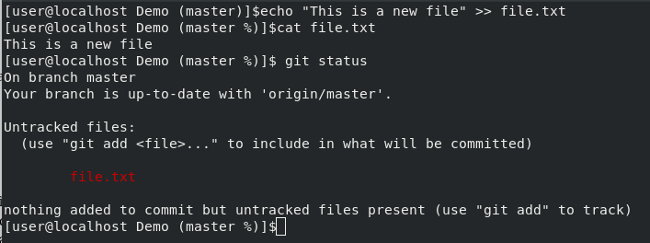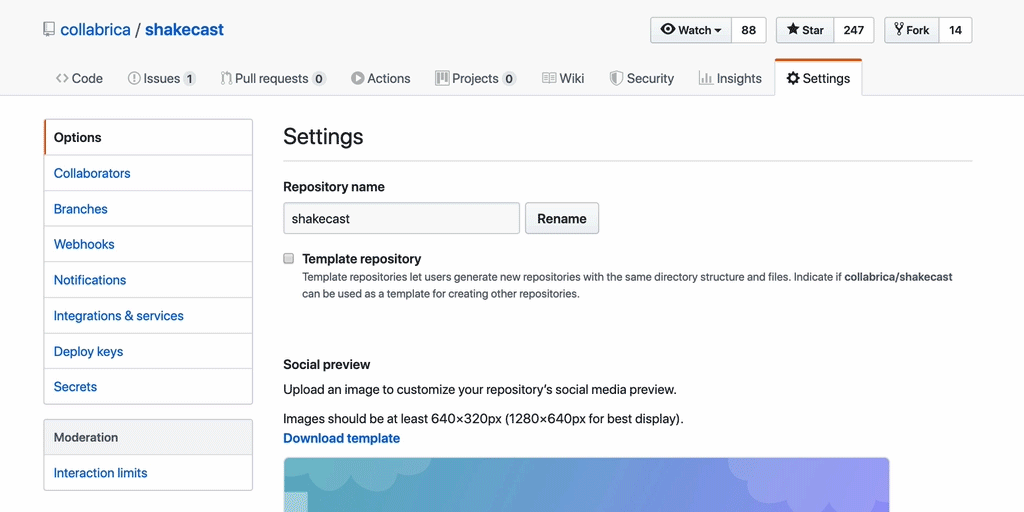

- #Git add new files to repo how to
- #Git add new files to repo zip file
- #Git add new files to repo update
- #Git add new files to repo software
Shouldn’t the button have been grayed out? Now, if I click Upload files, I get this helpful dialog:
#Git add new files to repo zip file
This might be fine for some scenarios, but won’t help me if I’m trying to add a PowerPoint or ZIP file to the site. If I click that button, I’ll get the same experience as if I edited a file, with the one addition being that I can specify a file name. GitHub exposes functionality to let me create a new file. Note buttons for Create new file and Upload files… When I view the main page of the repo, I see this: I’m going to return to Automapper again for this example. So how do you add a new file to a repo you don’t own?
#Git add new files to repo how to
Ok, now you’ve seen how to edit a file and you hopefully have at least some idea of what forks and pull requests are. Any additional changes you make in that branch will also become part of that pull request! Thus, it’s best to create a new branch for any particular change, and to keep pull requests small and focused. A common mistake to watch out for, though, is to make a pull request from a branch and then continue working on that branch. You can make pull requests within a repo or between a fork and its parent repo.

Instead, you have to request that the owner of the original pull your changes into their repo. When you follow this process, your changes aren’t automatically pushed back to the original repo. You can modify your copy of the original, and then submit your changes to the original repo. You can use a fork of a project as a kind of backup, since it copies the repo to your account.įorking is also used for collaboration. If the original repository continues to be updated, the fork won’t see these updates (at least, not automatically). Two terms you should know are forks/forking and pull requests.Ī fork of a project is a copy of the original at that point in time.

Once you click Propose file change, a pull request will be created and the owner of the repository will have a chance to review your change and either accept it, reject it, or discuss it with you. Scroll to the bottom – you should see your GitHub icon and a title and description for your change. You’ll be presented with a text editor view of the file, which uses markdown formatting. Mousing over it reveals:Ĭlick to fork the project and edit the file. Once you’ve clicked on the README.md file, you should see a pencil icon in the top right. Note that you must be logged in for this to work. Well, this page is displaying the contents of, so I first need to click on that file. Let’s say I want to add a link to the home page. I’m going to use a repo that I’m not an owner of as an example – in this case AutoMapper. Most GitHub repositories have a README.md file in their root.
#Git add new files to repo update
If all you need to do is update an existing file, that’s actually pretty easy. Unfortunately, GitHub doesn’t make it extremely easy to discover how to do this if you don’t already know the process and various jargon terms that are involved like “forking” and “pull request” so this post will demonstrate what’s required to simply add a file to a GitHub repo you don’t already own. Frequently, even as a non-developer, you may want to contribute to such repositories, maybe even just as simply as to add a file or perhaps update a text file in your browser. For example, the ASP.NET Core docs, or various awesome lists, or the slides and materials from conferences like Stir Trek.
#Git add new files to repo software
You now know how to push a folder to Github and to upload files to repository using git.There are a bunch of GitHub (and other git host) repositories that aren’t really for software projects, but rather are for documentation or other resources. Initialize a repository as a Git repositoryĪdd file or folder to your commit stagingĭownload commits, files, and refs from remote to local repoĬreate, list, rename, and delete branches To learn more about Git Commands, check out this Git Cheatsheet. Finally, push your changes of the local file or repository to GitHub (git push). Add the your file changes (git add) and commit your changes (git commit). Optionally initialize the local directory (git init). In the command line, go to the root directory where your local files are. $ git push origin master For simplicity, I considered that you have not built work branches and that you commit straight to the master branch.Īfter all of this, your file will be committed to your Github repository.

Move your file to the cloned repository.


 0 kommentar(er)
0 kommentar(er)
